Just when you thought that 2016 was practically over as far as the big smartphones are concerned, Google drops us a bombshell of a device. And no, we’re not talking about a literal exploding smartphone. The Google Pixel and Pixel XL are, indeed, groundbreaking smartphones in the history of Android, tough less because of the specs and more because of its features and implications. But for now, we set aside the conspiracies and ignore the conspiracies. For now, we dig deep into those very hardware and software features to see if the Pixel is truly a blast or just a dud.
Design
As with any smartphone, the first thing people will notice will be the device’s design. And knowing that it’s a “Google phone”, the Pixel’s appearance will naturally be subjected to even more scrutiny. Unfortunately, the Pixel leaves a lasting first impression that can be described as “ambiguous” at best. And we’re not even talking about its similarities to the iPhone.
There will naturally be comparisons between the Pixel and the iPhone. Fortunately for Android fans, any similarity between the two is really only skin deep, limited really to the spacious bezels at the top and bottom of the Pixel’s face. Unfortunately for Android fans, some of the details that do make the Pixel unique aren’t exactly flattering.
![]()
Yes, we’re talking about the “dual tone” design at the back. The glass section on the rear of the Pixel is supposedly for supporting IR functionality. We can bet, however, that Google designers could have come up with something less obnoxious. While beauty is truly in the eye of the beholder, expect that this element of the smartphone’s design to be the biggest target of criticism.
![]()
The rest of the smartphone, fortunately, is convincingly premium, both in build and in appearance. The Pixel boasts of an aluminum body that has benefited from HTC’s years of experience making its One flagships. In fact, the Pixel sports a ridge that is reminiscent of the HTC 10 itself.
![]()
The Pixel is otherwise plain and unadorned, as you might expect. Ports and openings are kept at a minimum, though, thankfully, Google hasn’t thrown out the 3.5 mm audio jack just yet. Sticking true to some of its conventions on the Nexus, the Pixel neither has a removable battery nor a microSD card slot. As buyers are limited to choosing between a basic 32 GB storage or a more expensive 128 GB configuration, users will basically have to resort to the cloud, Google’s cloud specifically, for anything in between. Which is exactly what Google wants for the Pixel anyway.
Google’s Android
More than simply the smartphone hardware, which is common by now, or the design, which some might find disagreeable, the Pixel is, more than any other Android device in the market today, all about Google. Even the Nexus doesn’t hold a candle to how much Google there is inside of the Pixel. Google’s ads makes sure that everyone knows that the Pixel was made by Google. And it isn’t just about the device either.
Of course, it’s still Android, 7.1 Nougat to be exact, and is easily identified as Android. But it is so different from the Android you see today, even on the Nexus, that you could almost consider it a custom OEM Android spin. Given that Google has basically become an OEM with the Pixel, that would be an accurate assertion.
There’s a new app launcher and home screen, for example. Circular icons abound, previously only possible with customized ROMs and skins. And those icons do more than just look pretty. A long on would makes some actions pop up. Which actions those are depends on the app in question. Sounds familiar? It’s pretty much like the 3D Touch found in the latest iPhone models and surely parallels will be drawn here as well.
The app grid itself no longer has a dedicated icon to summon it. Instead, users have to swipe from the bottom up to, well, bring it up. It’s a rather odd compromise between having a dedicated icon for an app grid or list and not having an app grid at all. Like iOS.
The Pixel is, unsurprisingly, preloaded with Google-centric experiences and apps. Allo and Duo are installed by default, edging Hangouts out of the picture. Photos are automatically backed to Google’s cloud, and Pixel owners are given an infinite amount of space for that.
![]()
But the real star of the show, and what will ultimately set the Pixel apart for months, or even years, to come, is Google’s latest stab at a personal AI-powered butler: Google Assistant.
Google Assistant
Google Assistant really isn’t a surprise. What was a surprise was how much emphasis Google put on it. To the point that it is the one software feature that, at least officially, is exclusively available on the Pixel. At least for now. Google will inevitably release Assistant to a wider audience, but it doesn’t seem to be in a hurry to do so any time soon. Especially when it needs it to be a major selling point for the Pixel.
Google Assistant combines all of Google’s search and machine learning technologies under one roof, from Google Search itself, to Google Now, to Now on Tap. It utilizes Google’s knowledge graph to tell you where the nearest Chinese takeout is. It employs text and image recognition to offer trivia about the movie poster you’re looking at. And it utilizes machine learning to predict what you’re going to ask it next.
Unlike other personal assistants, Google Assistant is able to hold a conversation. Or is at least advertised to. If you ask it something, it won’t be content to simply spit out the direct answer. It will suggest follow-up questions so you won’t have to ask them yourself. But should you choose to do so, it correctly remembers the thread of the conversation and will pick up where you left of. That is, if you’re lucky to have Assistant understand your every utterance.
![]()
Google Assistant is completely voice-driven. There’s no way to type your queries, you really have to speak out loud. Which means it can falter once in a while. And when it does, it loses the context of your conversation and becomes no better than the likes of Siri or Cortana.
Google Assistant holds a lot of promise and makes even more promises. But in its current incarnation in the Pixel, it is clearly still rough around the edges. It is, after all, practically in version 1.0. If Google is indeed serious in betting on AI for its future, we can expect the Assistant to grow by leaps and bounds in the coming months.
Camera
Spec sheets can be deceiving and the ultimate proof of that is the Google Pixel’s camera. On paper, it is not much better than the one found in the previous gen Nexus 6P, a Sony IMX378 on the Pixel versus an IMX377 on the Nexus. It has a 12.3 megapixel sensor, an f/2.0 lens, PDAF and Laser AF, and dual LED flash. On the front, the same 8-megapixel IMX179 as the Nexus 6P. In practice, however, the camera performs surprisingly well, confirming DxOMark rather early assessment. It’s a remarkable feat, considering the camera doesn’t even have that much-desired Optical Image Stabilization.
![]()
That last bit might shock those who have been following trends in mobile photography for the past three or so years. OIS has always been the holy grail, so why is Google ditching it in favor of EIS? As explained before, Google believes that EIS and its software algorithms are more than enough to fill in the shoes left by OIS. Plus, it allowed Google to banish the accursed camera bump as well.
It sounds almost too good to be true, but let the photos speak for themselves. Of course, the camera works best in bright light, but it was able to produce acceptable images, albeit with some expected grain. Autofocus, both of them, worked fast and accurately and the EIS really proves its worth in low-light and when recording videos. It’s not perfect, mind you, as sudden changes in lighting can make autofocus and stabilization lose their bearing for a bit. Still, for a camera that lacks OIS, it’s an impressive feat nonetheless.
Google is able to accomplish photography magic without the use of dedicated hardware. A bokeh effect, for example, can be achieved even without the benefit of a second camera sensor. HDR+ is also a huge benefit, so much so that Google has set it to be always on by default. Burst shots are supported even with HDR+ enabled, though there is some processing lag after you release the shutter.

Performance
Almost in stark contrast, there really isn’t much to say about the Pixel’s performance. Ignoring the usual benchmarks for the moment, the smartphone operates smooth as butter, benefiting from Google’s more direct control over both software and hardware. It doesn’t hurt that the Pixel is equipped with the latest Qualcomm Snapdragon 821 and Adreno 530 GPU, with ample 4 GB of RAM. Of course, the processor does more work on the Pixel XL due to its 5.5-inch 2560×1440 WQHD screen, versus the smaller 5.0-inch Pixel and its 1920×1080 FHD display.
Audio has never been a strong suit of any Nexus smartphone, and it seems that, at least for now, Google isn’t changing that tradition. Failing to utilize all that empty space on the face of the Pixel, the speakers are, instead, bottom blasting. They’re also nothing to write home about, either. Fortunately, you can still plug-in your favorite headphones for a better listening experience.
Another thing Google hasn’t changed at all is the lack of any button on the face of the smartphone. Like with the Nexus 6P, the fingerprint scanner is located on the back of the device, within convenient reach of the index finger. Google now calls its the Pixel Imprint, after the Nexus Imprint from last year. It works fast, taking you to the homescreen in an instant. But it also has one other talent. Swiping down on the sensor rolls down the notification shade, letting you take a peek at that growing list of entries. Sadly, that’s all the special talent the Pixel Imprint has.
![]()
We really have no complaints about the large batteries, 3,450 mAh on the Pixel XL and 2,770 on the Pixel. Both support Qualcomm Quick Charge for fast relief of charging pains. Of course with a compatible fast charger. Sadly, Google still hasn’t figured out how to do wireless charging with these metal phones, a feature that has become absent starting with the Nexus 6P last year.
As expected, the Pixel sports a USB-C slot, one that can be used for charging, data, and OTG. In fact, Google ships an OTG cable together with the Pixel. That connector is primarily meant to help fleeing iPhone users to migrate their data over to the Pixel. Sadly, it’s a hit or miss affair, depending on whether you have your iPhone’s data encrypted. At most, you will be able to ferry your photos, music, and videos from the iPhone over to the Pixel. But data like contacts and messages require an unencrypted device.
![]()
The one area where the Pixel disappoints the most is in water resistance. Google won’t admit it, but it’s graded only IP53, which is barely water resistant at all. While it could survive an accidental shower, depending on how you’re holding it, it won’t survive anything worse. In a day and age where smartphones have become extensions of ourselves, a device that doesn’t offer much assurance might not get much traction either.
Wrap-up
The Google Pixel represents a new chapter in Google’s smartphone history in more ways than one. Google is trying hard to replicate Apple’s success, even to the point of pricing the Pixel similarly. A 32 GB Pixel XL, for example, costs no less than $769, while 28 GB storage goes for an astounding $869. The Pixel is, of course, cheaper, but only by $120.
![]()
More than that, however, the Pixel is unabashedly Google’s smartphone. It is clearly no Nexus, in price and in purpose. Whereas the Nexus showcased the best of what the Android operating system has to offer, the Pixel is meant to flaunt Google’s chops in search, cloud storage, and, most especially, machine learning and artificial intelligence.
That, in the final analysis, makes the Pixel a harder sell. While it definitely outranks the Nexus in terms of hardware, it requires a commitment to Google’s ecosystem far more than any other OEM has ever required. To put it simply, you need to buy into Google’s spiel, hook, line, and sinker, for the Pixel to make perfect sense. The camera alone, while superb, might not be enough to justify the near $800 price tag. And the design is not exactly something that’s even going to appeal to a wide audience.
In the end, the Google Pixel is a smartphone clearly designed by Google, but also clearly designed for those who really believe in Google as well.
![]()




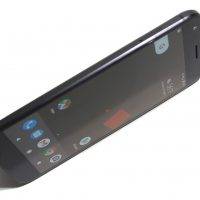
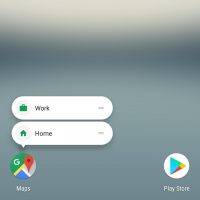

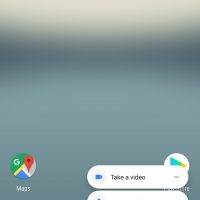
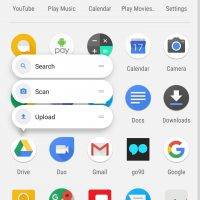
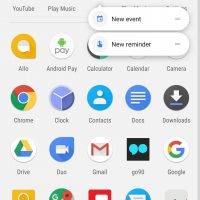

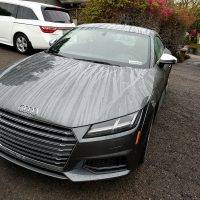















Hopefully Google will rule over other smartphones ( even iPhone or so). I, my self as a google lover and if I had a product like smartphone from google I would defiantly be happy with that if I find something very good and easy to use.
Google Assistant seems better for those with busier, more social lifestyles and that isn’t me 90% of the time. I also couldn’t imagine speaking to the phone when out and about. I am pretty entrenched in Googles offerings too so it would probably make sense if the overall package was better. The limitations really stand out at the prices asked. They couldn’t sell me on the unlimited photo storage either since I already have 1TB thanks to Googles Local Guide program.
Hopefully it won’t be too long before Google releases the Assistant to other devices as an app or part of its launcher.
I can’t perceive how I’m going to swipe my finger on the finger print reader on the back of the phone, while my phone is docked (e.g. car dock).
No removable battery? So this expensive phone becomes a disposable phone after the battery is dead. My phones last longer than the battery.
28GB – you mean 128GB